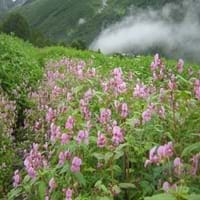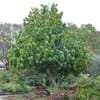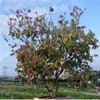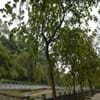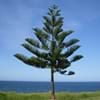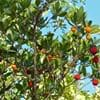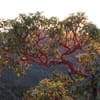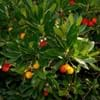What is
Life Span
Perennial
Annual or Biennial
Type
Tree
Flowering Plants
Origin
Mid-Atlantic United States, Southeastern United States, South-Central United States, Texas
Northeastern United States, North-Central United States, Canada
Types
Not Available
Not Available
Habitat
Dappled Shade, Shady Edge, Woodland Garden Secondary
Dry areas, Rocky areas
USDA Hardiness Zone
4-9
2-7
AHS Heat Zone
9-1
7 - 1
Sunset Zone
3a, 3b, 4, 5, 6, 7, 8, 9, 14, 15, 16, 17, 18, 19, 20, 21, 22, 23, 24
21,22
Habit
Thicket/Colonizing
Clump-Forming
Information
Plant Size
Minimum Height
300.00 cm
99+
30.50 cm
99+
Minimum Width
460.00 cm
99+
20.30 cm
99+
Plant Color
Flower Color
White, Green, Ivory
Yellow, Pink
Flower Color Modifier
Bicolor
Bicolor
Fruit Color
Purple, Black
Not Available
Leaf Color in Spring
Green, Blue Green, Dark Green
Blue Green
Leaf Color in Summer
Green, Blue Green, Dark Green
Blue Green
Leaf Color in Fall
Yellow, Green, Purple, Blue Green, Dark Green, Yellow green
Blue Green
Leaf Color in Winter
Not Available
Light Green
Shape
Leaf Shape
bipinnate
Pinnate
Thorns
Yes
No
Season
Plant Season
Spring, Summer, Fall, Winter
Summer, Fall
Growing Conditions
Sunlight
Full Sun, Partial Sun
Full Sun, Partial Sun
Growth Rate
Fast
Fast
Type of Soil
Clay, Loam, Sand
Loam, Sand
The pH of Soil
Acidic, Neutral, Alkaline
Acidic, Neutral, Alkaline
Soil Drainage
Well drained
Well drained
Bloom Time
Summer
Early Summer, Summer, Late Summer, Early Fall
Repeat Bloomer
No
Yes
Tolerances
Pollution, Soil Compaction
Not Available
Care
Where to Plant?
Ground
Container, Ground
How to Plant?
Cuttings, Divison, Seedlings
Seedlings
Plant Maintenance
Medium
Medium
Watering Plants
Watering Requirements
Needs high amount of water
Do Not over Water, Keep ground moist, Never Over-water, Requires regular watering
In Summer
Lots of watering
Lots of watering
In Spring
Moderate
Moderate
In Winter
Average Water
Average Water
Soil
Soil pH
Acidic, Neutral, Alkaline
Acidic, Neutral, Alkaline
Soil Type
Clay, Loam, Sand
Loam, Sand
Soil Drainage Capacity
Well drained
Well drained
Sun Exposure
Full Sun, Partial Sun
Full Sun, Partial Sun
Pruning
Remove damaged leaves, Remove dead branches, Remove dead leaves
Remove damaged leaves, Remove dead leaves
Fertilizers
All-Purpose Liquid Fertilizer
fertilize in early summer, fertilize in growing season, fertilize in spring
Pests and Diseases
Aphids, Leaf spot, Mealybugs
Insects
Plant Tolerance
Drought
Drought
Facts
Flowers
Showy
Showy
Flower Petal Number
Single
Single
Fruits
Showy Fruit
Yes
No
Edible Fruit
No
No
Fragrance
Fragrant Flower
Yes
No
Fragrant Fruit
No
No
Fragrant Leaf
No
No
Fragrant Bark/Stem
No
No
Showy Foliage
Yes
No
Showy Bark
Yes
No
Foliage Texture
Coarse
Fine
Foliage Sheen
Matte
Matte
Evergreen
No
No
Invasive
Sometimes
No
Self-Sowing
Yes
Yes
Attracts
Bees, Butterflies, Insects, Not Available
Butterflies, Insects
Allergy
Skin irritation
Corydalis
Benefits
Uses
Aesthetic Uses
Borders, Woodland margins
Beautification, Showy Purposes
Beauty Benefits
Not Available
Not Available
Edible Uses
Yes
No
Environmental Uses
Air purification
Air purification, Food for insects
Plant Benefits
Medicinal Uses
Alterative, Analgesic, Diaphoretic, Opthalmic
Sedative
Part of Plant Used
Bark, Leaves, Root
Flowers
Other Uses
Used as a potherb
Decoration Purposes, Showy Purposes, Used as Ornamental plant
Used As Indoor Plant
No
No
Used As Outdoor Plant
Yes
Yes
Garden Design
Feature Plant, Foundation, Mixed Border
Mixed Border, Rock Garden / Wall, Wildflower
Scientific Name
Botanical Name
ARALIA spinosa
CORYDALIS sempervirens
Common Name
American Angelica Tree, Devil's Walking Stick, Hercules' Club
Colic Weed, Pale Fumewort, Pale Corydalis
In Hindi
Devil's Walking Stick
Capnoides
In German
Teufelsspazierstock
Capnoides
In French
Walking bâton du diable
capnoides
In Spanish
Bastón del Diablo
Capnoides
In Greek
Περπάτημα Stick διαβόλου
Capnoides
In Portuguese
Vara andando de diabo
Capnoides
In Polish
Diabelski laska
Capnoides
In Latin
Virgam diaboli
capnoides
Classification
Kingdom
Plantae
Plantae
Phylum
Magnoliophyta
Basidiomycota
Class
Magnoliopsida
Agaricomycetes
Order
Apiales
Agaricales
Family
Araliaceae
Fumariaceae
Genus
Aralia
Hypholoma
Clade
Angiosperms, Asterids, Eudicots
Angiosperms, Eudicots
Tribe
Not Available
Fumarieae
Subfamily
Aralioideae
Fumarioideae
Number of Species
Not Available
1
99+
|
||
|
||
|

